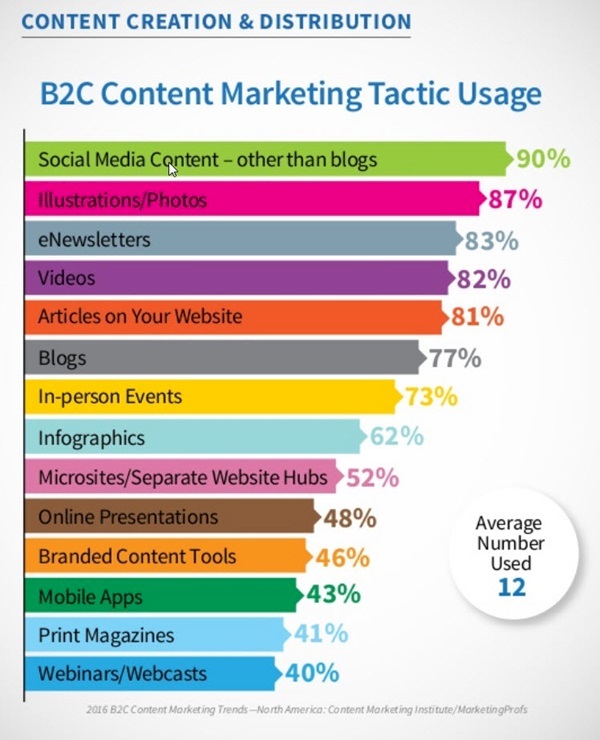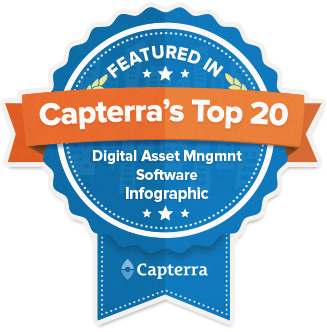When it comes to investing in a new solution for your organization, there are a number of factors to keep track of. We've listed the most important things to consider when investing in a Digital Asset Management solution.
Start with your people
A recent article in AdWeek shared with us what the best digital CMOs are thinking. As we’re focusing more and more on digital transformation and creating seamless customer experiences, we must also create a seamless integration between the divisions of an organization. Companies can no longer afford to work in silos, where each department focuses on their own task. Integration is key both for your customer experience and your organisation.
The CMO and CIO are the most important roles to make sure they are collaborating as these two roles are your key to delivering better customer experiences.
Finally, make sure you have a CMO that recognizes the importance of how the right marketing tools can help them improve their communication. By embracing new technology while making sure to evaluate how it can help your organization is key to succesfully identifying potential new tools.
Map out your assets
Providing assets like images and movies are a vital part of ensuring your customers are receiving a seamless experience. According to the Content Marketing Institute report on B2B content marketing , the majority of of assets used in content strategies nowadays are digital. For B2C-companies, some of these numbers are even higher.
What are your most important assets? What different channels are you using? Chances are you have quite a few assets that are being produced by a number of people and used in several channels. If so, you are most certainly in need of a Digital Asset Management-system.

Image credit:Content Marketing Institute
Convincing executives
As the case with acquiring any software or system, you will probably have to convince your executives to spend some of the budget on your system. Most likely they will ask why they should, and here’s where you need to be loaded with arguments:
- Provide references
In order to demonstrate the value of DAM, find a case that is similar to yours in order to illustrate exactly how a DAM will improve your organization. Most likely you will find some similarities between your challenges and the issues the company in the case study struggled with in order to convince your executives of the benefits!
- Estimate the ROI
Make a rough calculation of the costs you will save. Consider how much time you and your team spend on finding and managing assets today. 20 minutes a day? An hour? What does an hour of your day, every day, for a year cost your company? When you add these numbers up they can be pretty convincing.
- Highlight other benefits
Possessing the rights to your assets is vital, or you might run the risk of being the victim of a lawsuit. Not only does DAM let you manage your assets in general, it also lets you keep track of your usage rights. This aspect could help convince executives who might listen more to security benefits than efficiency gains.
Comparing vendors
When you’ve identified the need, mapped out your assets and got your executive team behind you, you need to find the right Digital Asset Management-system.
A good place to start is by having a look at vendor listings. For instance, software advisory company Capterra recently released their updated list of the 20 most popular DAM-softwares. QBank is proud to be featured as one of the top 10 DAM-softwares!
In order to be classified as a Digital Asset Management-software, the DAM should include some specific functions. Make sure you map out the most important features for your organization, but also review the ones that might become important in the future.
There are some functions that have been recognized by the DAM-community. For instance, Forrester’s 2014 Wave for DAM Solutions identified two key capabilities of DAM solutions:
"Rich media content is an integral part of digital experiences, and DAM solutions must provide the functionality required to prepare this content to for delivery to all channels, as well as globally.
DAM solutions must support marketers and other business users as they work together to create and deliver experiences. They need to support business process management, content management automation and integration with other marketing technology."
Then there’s the DAM Foundation, who has composed a list of the 10 core characteristics a DAM should possess.
For instance, DAM systems should:
- Ingest and store assets individually or in mass asset, and allow for editing of media and their metadata.
- It should also make sure the assets are secure and have the ability to be transformed.
- Assets should also be able to relate to other assets, in order to track relationships between an original asset and additional versions of it.
- Users should be able to find and retrieve assets in a structured process, and should allow several users on different locations to collaborate in a centralized system.
- A DAM should let viewers preview assets before downloading, as well as allow editors to publish and share assets with external parties.
Make sure to check out the full list of the core characteristics a DAM should have!
The value of flexibility
Finally, just like the people in your organization your systems need to be integrated with each other. The key to success is gaining a system that is flexible.
A DAM system should be adapted to fit the workflow within the organisation and should be integrated to suit the workflow of everyone from your designer to your social media manager. This means that you should invest in a DAM that you can integrate with all the different systems that your employees are working with. This will ensure a smooth transition to the new DAM-software so that you and your organisation can hit the ground running.
If you want to know more about QBank and its different features, take a look at our videos:
